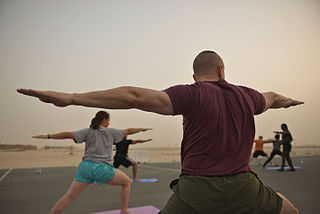When I left the yoga studio in my neighborhood, ten years ago, I’d been struggling alone with issues of inappropriate touch in class—issues that now are emerging into public view.
Both of the teachers whose touch had disturbed me were women, and none of it was sexualized, but fell more into an area of corporal punishment, like a schoolteacher of old, walloping a misbehaving student. Like some of the students now speaking out publically about trusted, revered yogi teachers touching them in unwanted, un-consented ways during a class, my initial reaction was shock. I knew the touch felt bad, and wrong. But I could not make any logical sense of it, so I did not speak up. Instead I questioned if I was being “too sensitive.”
For the last blow, my teacher used a yoga prop, a wooden slat the size and weight of a hefty ruler, to smack me on the crown of my head, hard enough to hurt and momentarily disorient me. She was being observed that day by her teacher, the yogi who owned the studio. I had stopped taking this head teacher’s classes because she was inclined to walk down a row of students in Triangle pose, flat-of-the-hand-smacking each of us in the small of the back and clucking disapproval of our postures. When I had confided to a fellow student my discomfort with this practice, the student suggested it was simply a matter of teaching style, and offered the names of two other teachers in this studio who she knew to be gentle, non-physical in their instruction. But it was one of these two “gentler” teachers, who smacked my head with a wooden slat.
I had never minded a teacher’s gentle, hands-on adjustments to my posture: straightening my shoulders, or tapping one heel as she reminded me verbally to move that foot forward an inch. In this yoga studio, I was never asked, did I mind being touched for corrections? If asked, I would have said it was fine; until I realized that such touch could shade from gentle suggestion, to punitive aggression.
The smack on my head, I later concluded, was the reputedly gentle instructor, trying to show her teacher that she could be tough. I didn’t care, by then, what the reason was. I blew off the rest of that series of classes, and sent the owner of the studio a short note, explaining that I would forfeit my class fee and would no longer be studying at her studio because I was not okay with teachers hitting me, as a method of teaching. That, in my opinion, physically striking a person in no way promoted learning, in fact for me it had a distinctly opposite effect.
Her response to my note was that she and some of her teachers went each year to study with a noted yogi in India, and this was the style of teaching employed there. (I’ll note here that unlike the stories of sexualized touching in class that you can read at the moment on Jezebel or the NY Times, this was not Ashtanga yoga. My teachers followed the Iyengar line–which I liked specifically for the fact that it emphasizes very detailed corrections of posture.)
To me, this didn’t make any more sense than saying we should marry off daughters at the age of six, because this was still the custom in the little village in India where that ashram was located. The inability of these American teachers to critically filter the teachings stunned me. The point of study with a revered teacher should not be to emulate his every behavior, even if damaging.
Many of the women now coming forward to witness inappropriate touching in their yoga classes report having been in thrall, almost like a hypnotic state, where it was difficult for them to conceive that their hero-yogi might be doing something wrong. Was he not a highly advanced spiritual practitioner? Therefore, there must be some valid reason for his behavior. And somehow the fact that inappropriate touch is perpetrated right in front of other students and teachers normalizes the bad behavior. After all, if it’s wrong, why do it in front of all those witnesses?
You might note here a striking parallel to verbal, physical, and sexual abuse. The shift by someone respected or feared, someone in power, from benign to abusive is achieved in part through eroding the survivor’s sense of reality: If this person is committing this act, how could it be wrong? [I’ll walk right past certain parallels in the body politic, just now–infer what you like from that particular noxious resonance.]
The founders of these yoga lineages are men. The vast majority of students are women. Let’s not get confused by the fact that many mid-level teachers are women also; they are reproducing the bad behavior of their male mentors. And the lion’s share of profits from the booming yoga-economy go to men. Should we mention here that a huge portion of these profits stem from clothing? Clothing that is form-hugging, expensive, and de rigueur in many yoga classes.
I’m lucky that the work I do rarely requires dressing for the office. Somewhere along the way, I decided that I would wear only clothing that permitted me to do everything I did in a normal day, including yoga. So I was generally the only person coming to those yoga classes in a t shirt and loosely fitting jeans or sweats. Apart from rare days when I had to dress for fancy events, I could drop into Down Dog anytime, in my street clothes. If you’re eying those forty dollar yoga tights, be confident that any decent teacher can easily correct your form in jeans.
Like the assertion that yoga practice requires an expensive and sexualizing uniform, let the smell test be our guide to teaching style. If it smells like a rotten fish, it almost certainly is. Don’t let the nuances to the question of consent for intimate or forceful touch between adults, override common sense. For me, the question of people viewing my body in yoga-tights and a sports bra was settled: Not necessary, or even relevant, to my yoga practice.
At a more basic level, bodily integrity, including the right to refuse unwanted physical contact, is essential to personal dignity. And teaching–whatever its lineage–should honor the personal dignity of every student.






